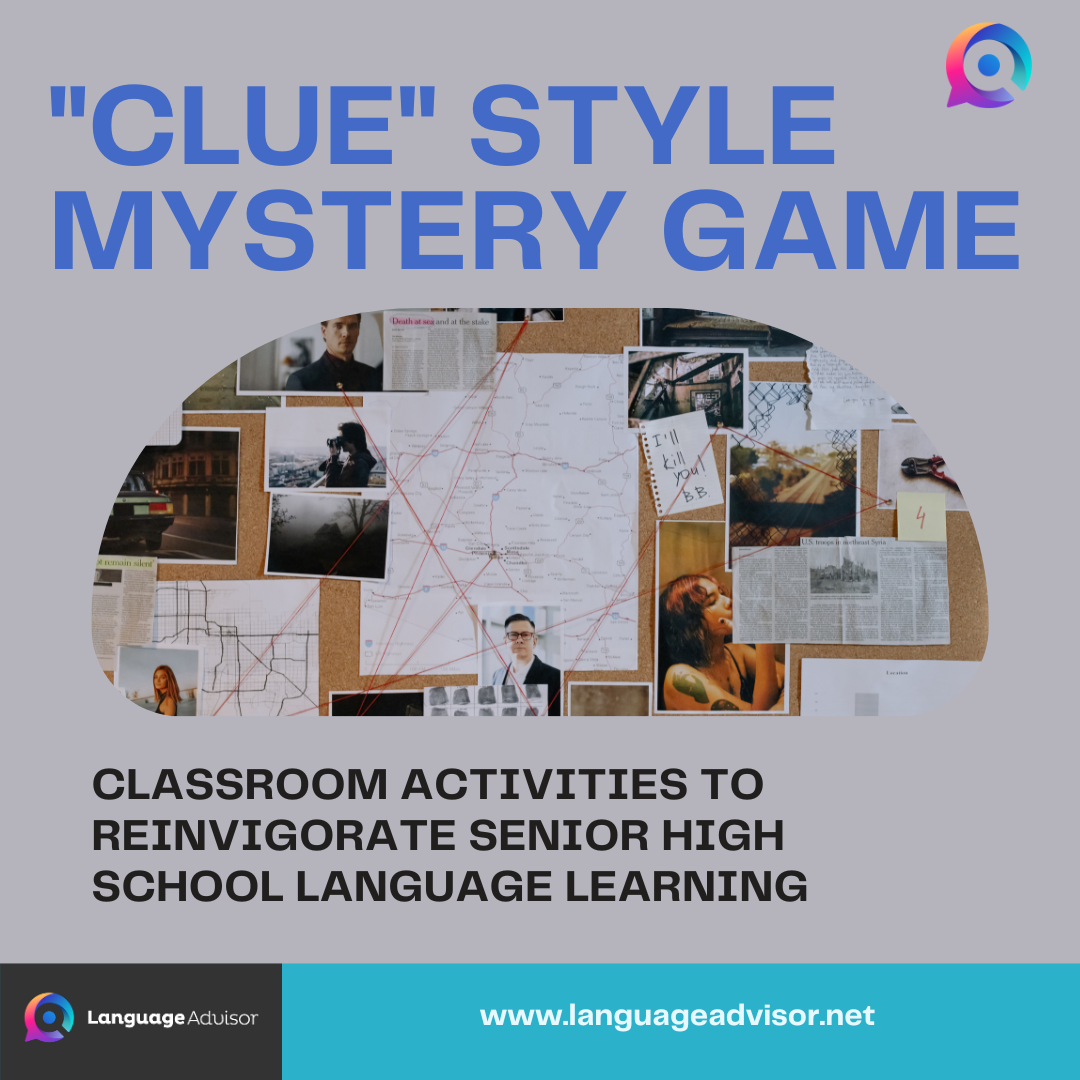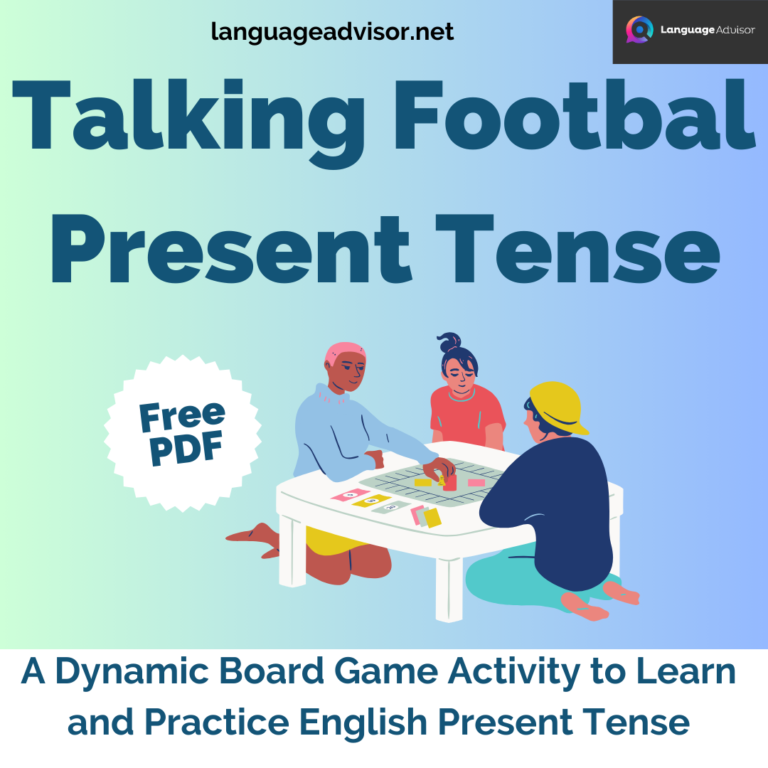“CLUE” STYLE MYSTERY GAME. Classroom Activities to Reinvigorate Senior High School Language Learning
“CLUE” STYLE MYSTERY GAME

Classroom Activities to Reinvigorate Senior High School Language Learning
In the dynamic world of senior high school language teaching, keeping students engaged and motivated is often a thrilling challenge. As educators, we understand that the key to successful learning lies in creating an atmosphere where students are not just participants but active enthusiasts. Here are some classroom activities designed to ignite the language classroom, bringing energy, excitement, and enthusiasm to senior high school students. From interactive games to creative exercises, we’ll delve into ways to make language learning an enjoyable and enriching experience.





“CLUE” STYLE MYSTERY GAME
Target Group: 2nd year
Difficulty Level: Conversational
Activity Objective: To practice using passive voice.
“CLUE” STYLE MYSTERY GAME – Procedure
The class is divided into groups of 3 or 4 students. Each group receives a separate deck of cards, with all cards shuffled except for 3 (one suspect, one weapon, and one location) in a separate envelope. The teacher tells the students that someone has murdered X cute stuffed animal, and they
need to find out who did it! The students deal out all of the cards to each other, and each group receives a slip of paper. The paper contains a checklist of all of the suspects, weapons, and locations, along with an example sentence structure to be used during the game. Each student takes
turns guessing at the combination of cards in the envelope by saying, “I think (x cute stuffed animal) was murdered/killed by (suspect) in the (location) with the (object)”. The student to the left will show a card mentioned in the accusation, unless they do not have one. If they are not holding a card mentioned in the accusation, the next student to the left will. If no one holds a mentioned card, then the accuser is right! Each time a new card is revealed, students mark it off on the checklist. The teacher can either rig the game to be a race, so that the first team wins, or have different cards in each team’s envelope, making the end result mixed. If the end result is mixed, each group reports their results to the class (using the passive voice structure). If not mixed, the winning team does.
Materials and Preparation
Materials: a cute stuffed animal (something that is a recognizable character is good); copies of the murder checklist; enough separate decks of cards (with envelopes) for the whole class;
(not required) a prize for the winning team.
Preparation: the murder checklist can be assembled using either Word or Excel. There should be a space next to each suspect/location/object to check it off the list. The most important thing about the sheet is that it is easily understandable (chart formatting helps) and that it includes the focus grammar. The cards are a bit more tedious, however. Something sturdy (such as cardstock or cardboard) should be the base. Stapled, taped, or
glued on the front should be a picture and caption of each possible suspect, location, and object.
Alternatively, those with access to more advanced technology (laminators, color printers, etc.) can easily make sets of cards using other methods. Keeping each deck separate is also important – plastic bags or big folders are important to ensure each group gets only 1 copy of each card. Using
large decks will make the game longer, whereas using smaller decks will make the game quicker.
Suggestions and Advice
While the game is actually quite simple in execution, explaining it can actually be more complicated and can become burdensome. Practicing giving clear directions is also very helpful.
Additionally, some schools may take issue with a “murder” game, so asking beforehand is important. On the other hand, the game can be easily adapted into any kind of “whodunnit” game (for example, Who ate the birthday cake?). For more advanced students, this game can become too easy and boring, although for basic level students it can provide a good opportunity for repetitive use of a grammatical phrase.





Classroom Activities to Reinvigorate Senior High School Language Learning
As we conclude this exploration of classroom activities to energize the language class for senior high school, we’ve witnessed how a well-crafted lesson plan can transform a mundane classroom into a vibrant hub of learning and creativity. These activities not only boost language skills but also foster a sense of teamwork, critical thinking, and cultural appreciation. By implementing these engaging methods, educators can ensure that their senior high school students are not just fluent in the language, but also passionately engaged in the journey of language acquisition.
So, let’s continue to infuse our classrooms with energy, enthusiasm, and a love for language, empowering our students for a brighter future.





Also check out these articles on teaching, teaching methods and teaching tools
















